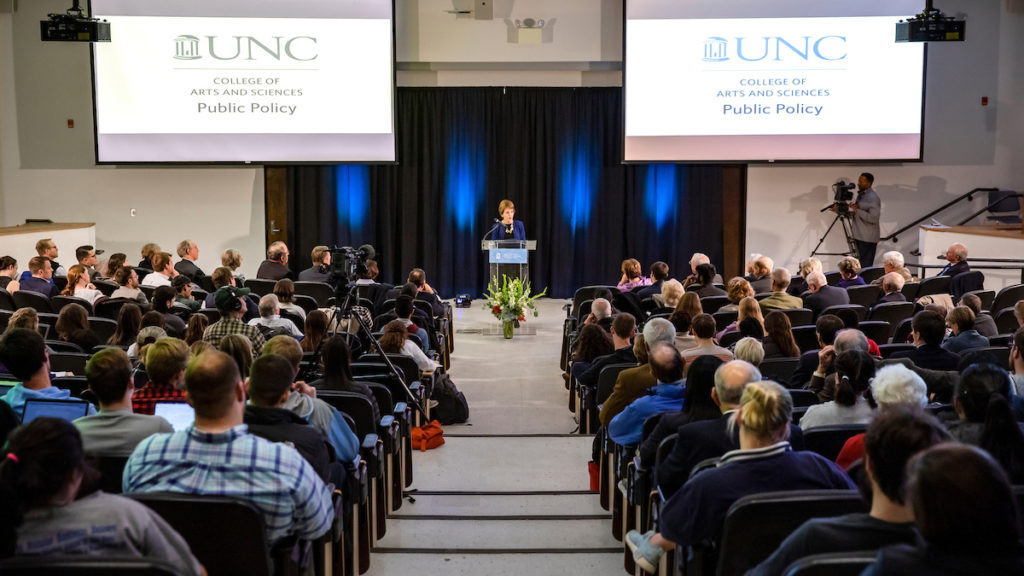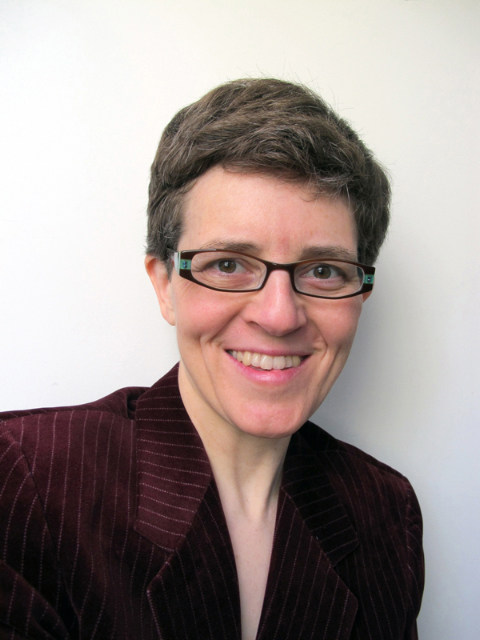
Michael Chitwood, UNC lecturer of creative writing, is co-editor of a new volume of essays, Best Creative Nonfiction of the South, Volume II: North Carolina (October 2017, Texas Review Press). We recently chatted with Chitwood about the essays, which celebrate the state’s past and present, and its range of cultures and geography, from the mountains to the sea.
Q: How did you go about choosing a representative sample of work for this volume?
A: It may be cliché, but it really does cover from Manteo to Murphy. We’ve got the mountains and the coast and the Piedmont squarely in the middle. One of the things I realized in reading back through the essays is how many of the writers talk about place, their place. For Michael Parker, it was a particular field he went to in his youth. Thomas Rain Crowe talks about how the mountains were so much a part of his language, and when he moved away he consciously tried to get rid of that because it was so disparaged. Later, he tries to reclaim that in “Native Tongue.”
Stephanie Elizondo Griest writes about Cherokee, North Carolina. Bland Simpson has a beautiful piece about the coast. Judy Goldman writes about Charlotte. And much more. I wanted to cover the whole state, and all of the different cultures, and I really think the book does that.
Q: Tell us about the variety of subjects readers will find in the book, from pieces on hospitality, to horses and boys, to the practice of “chiefing” in Cherokee.
A: We really do feature a whole range of topics. Clyde Edgerton has a hilarious piece about Umstead Park. Randall Kenan has a piece on pigs, and the pork industry is huge in North Carolina. It’s a coming-of-age story where he learns life lessons, but he also brings it into the present day by talking about environmental concerns over hog waste polluting our rivers.
Georgann Eubanks’ essay is a literary tourist map of North Carolina. If you want to find out where all of our esteemed writers are from, that piece is for you.
We cover everything from natural disasters to different cultures to personal issues like a spouse’s illness.
 Q: The book contains contributions from five different faculty members at UNC. What do you think this says about the creative writing program at Carolina?
Q: The book contains contributions from five different faculty members at UNC. What do you think this says about the creative writing program at Carolina?
A: When I asked Marianne Gingher, Stephanie Elizondo Griest, Randall Kenan, Michael McFee and Bland Simpson to contribute something, it did cross my mind that we were including a lot of writers from one school. Then I thought, “I’m not going to back down from that, because these are great writers.” I think it speaks to the strength of our program, that we have so many people who have produced such good work.
Q: What is it about highlighting nonfiction that you like?
A: It’s become the genre of interest right now. If you look at The New York Times’ bestseller list, many of those books are nonfiction. In the right hands, what all of these pieces do, they’re just good storytelling. Allan Gurganus’ piece about Hurricane Floyd — that came to my mind immediately. I have never forgotten the moment in that essay where a guy goes out on his boat in the floodwaters of Princeville, and he doesn’t say, “Please identify yourself.” He just says simply, “Where are you?” And people in their attics shout back, and he chainsaws through the roof to get them out of the house and rescue them.
Q: What kind of picture do you think these pieces paint about North Carolina today and tomorrow?
A: Michael McFee really speaks to the changing South, for instance, when he chronicles the development of Durham through the story of a road, Pickett Road. Jan DeBlieu’s piece talks about the changing Outer Banks and how frustrated she feels with the box stores coming to that area and all of the development that’s happening there.
Q: You’ve got a new book – your ninth – of poetry coming out in March 2018. Can you tell us a little bit about that?
A: It’s called Search and Rescue (LSU Press), which is the big poem in the middle of the book. It’s based on a manmade lake in Virginia, and the effect this lake had on a particular mountain community. One of the things the book jacket says is that in the Celtic tradition, there are things called “thin places,” where you are close to the “other side,” where there’s a short distance between heaven and earth. So a lot of the poems are about those thin places.
Interview by Kim Spurr




